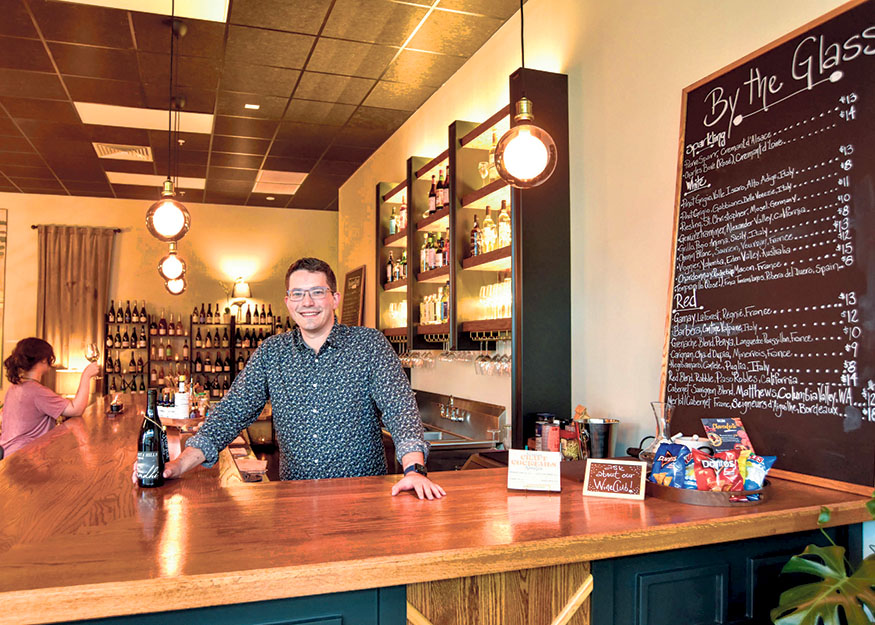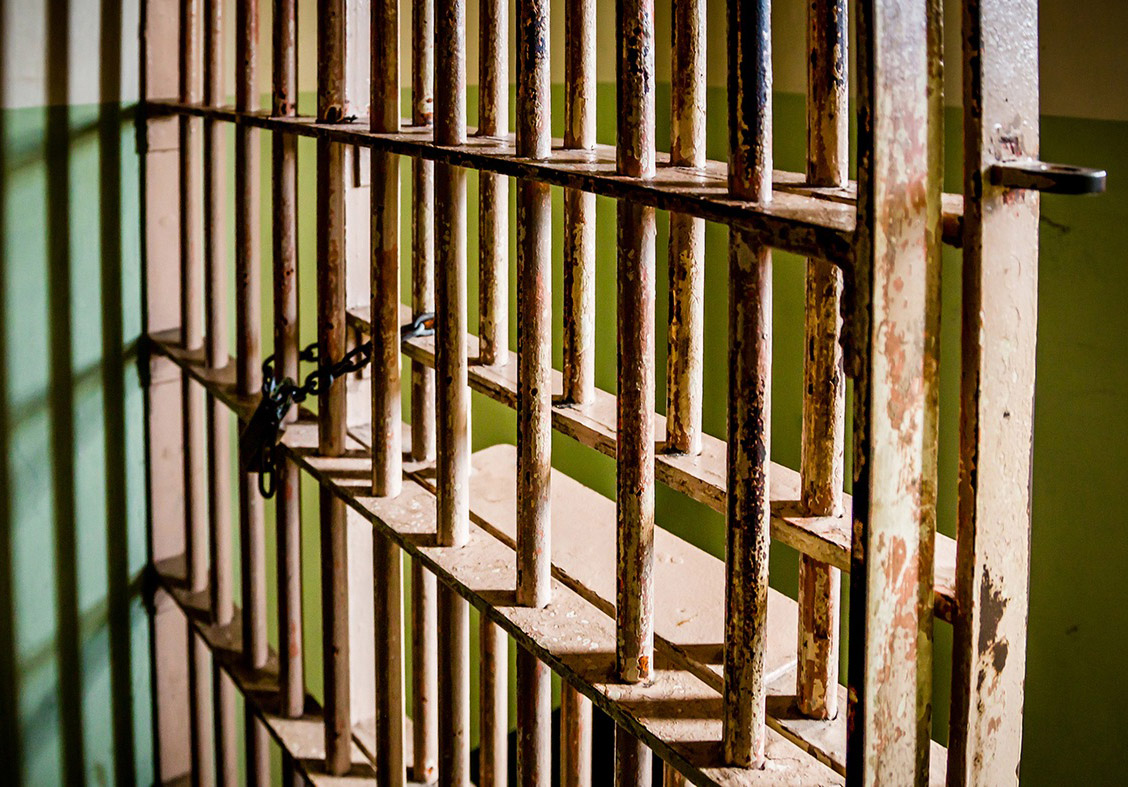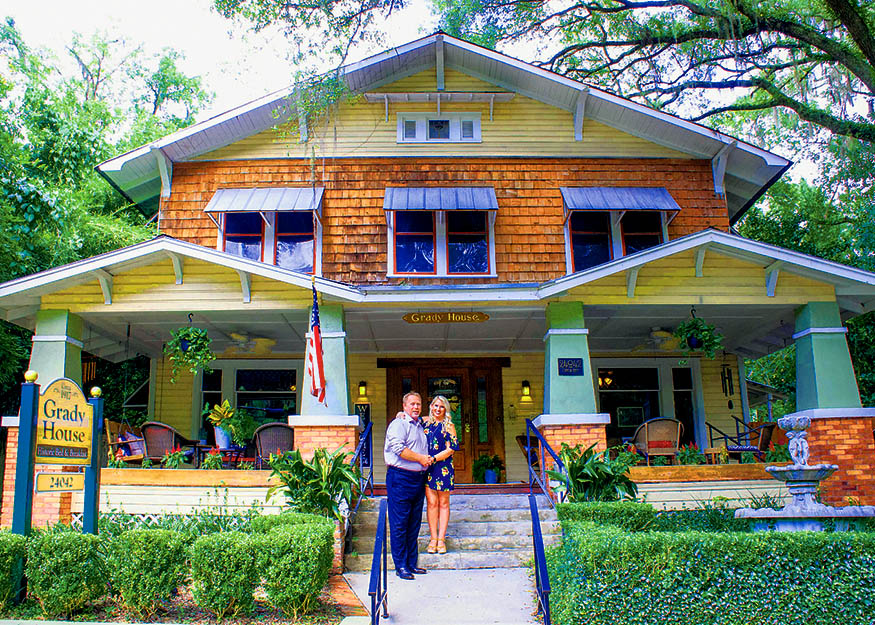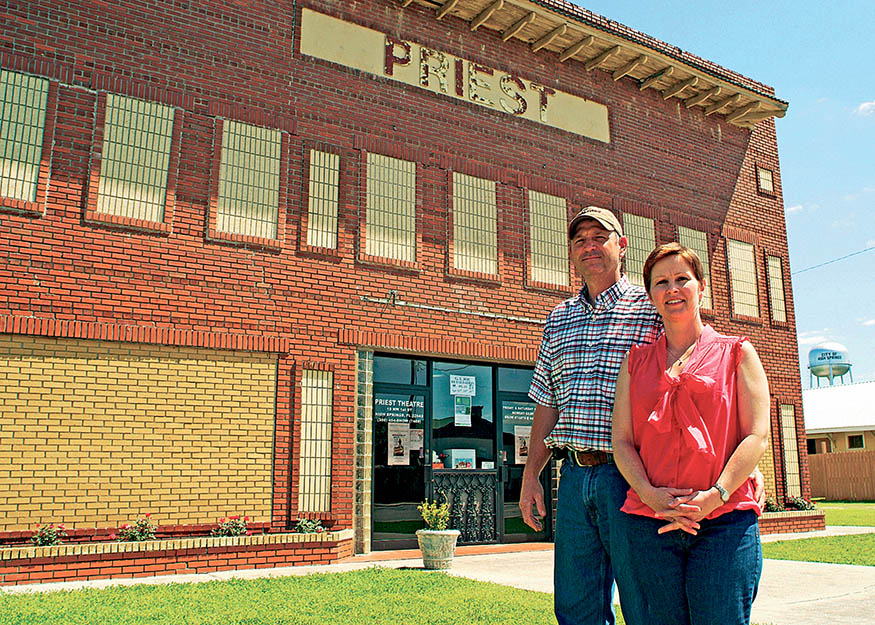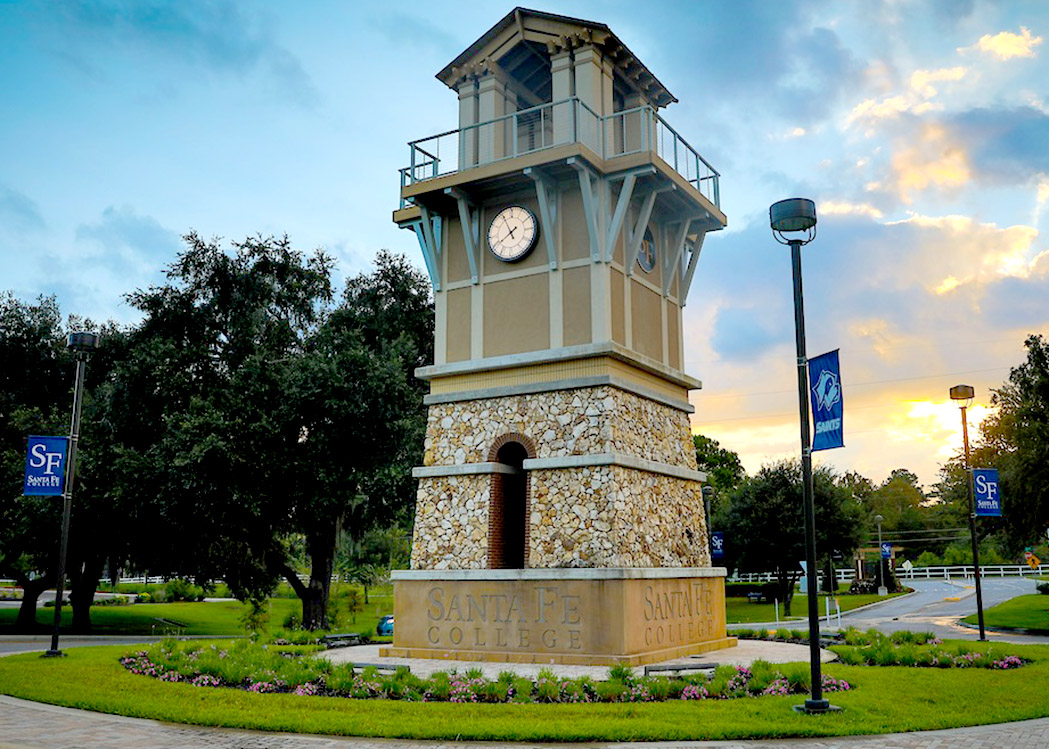HIGH SPRINGS ‒ The High Springs City Commission meeting room was filled to capacity on July 13 with citizens recounting how meaningful the historic Priest Theatre has been to their lives. The many testaments consumed much of the meeting as citizens and Commissioners alike shared recollections of the theatre and what it had meant to them.
The Priest Theatre, a 1910-era landmark in the heart of downtown High Springs located along Northwest 237th Street, is currently in a severely blighted condition and has been so for some time. The Florida Legislature approved a $1,040,450 legislative appropriation to the City of High Springs to purchase, renovate and restore the building for public use. The first steps in this process for Commission consideration include an appraisal of the building and that an earlier assessment report by architect Paul Stressing be updated. The Commission unanimously authorized City staff to move forward with these two matters.
The appropriation from the state requires $250,000 in matching funds, and both CRA and Wild Spaces funds have been identified as appropriate to meet the matching requirement.
In other business, the Commission gave final approval for a zoning change from Planned Development (PD) to Residential (R-1) on one acre +/- located next to Bridlewood along Northwest 222nd Street. The zoning change was requested by Joe Tillman and was approved on first reading on June 22. This property was originally zoned R-1, then became a part of the Tillman Planned Development (PD). Tillman requested that the parcel revert back to R-1. Staff recommended approval of the zoning change.
Tillman plans to place a mobile home on the property while his home is being built, a process which he expects to take three to four years to complete. Although the zoning change is not related to the mobile home, Tillman can request that a mobile home now be allowed on the site.
When this item was heard by the City’s Plan Board on June 19, several citizens expressed concern that a mobile home should not be allowed to be placed on the property as it would be inconsistent with surrounding residential properties. Although only one citizen, Sue Weller, addressed the issue at this Commission meeting, she asked that her objection be put on the record. Ultimately, the High Springs City Manager will resolve the matter whether to allow the mobile home on this property if Tillman makes that request.
In other City business, the Commission unanimously approved an ordinance on second reading that regulates the use of larger vehicles on Northwest 186th Avenue, formerly known as U.S. Highway 27 Alternate. The change is intended to help maintain normal and safe movement of traffic. Staff met with the Florida Department of Transportation (FDOT) and requested that all motor vehicles having three or more axles use the preferred truck route of State Road 20/State Road 25 U.S. Highway 441 to State Road 45/High Springs Main Street. FDOT had requested that the City provide an ordinance restricting vehicles having three or more axles. This item was heard and approved on first reading on June 8. Signage will be prepared to advise trucks of the change.
Fire Services Assessment rates for Fiscal Year 2023-24 will remain at the current rate with no increases. Commissioners voted unanimously to maintain the initial preliminary rate resolution. Those rates are $223 for residential dwellings, $0.09 per square foot for commercial properties, $0.02 per square foot for industrial/warehouse properties and $0.16 per square foot for institutional properties. The resolution establishing the final assessment will be considered at the Aug. 10 meeting.
The Commission unanimously approved a minor site plan for a pole barn to be located at Sweet Meats Butcher Shop, 18172 U.S. Highway 441. The property, which is currently under construction, consists of 1.8 +/- acres and is owned by Robert Gay, President, BCE Supply Chain Enterprises, Inc.
Gay was at the Planning and Zoning Board meeting on June 19 and explained that the pole barn would be located behind the building and would be used for barbecue classes, competition, special events and a wild game dinner later this year.
Commissioners also approved a preliminary plat for Hidden Springs Villas, a 44-unit townhome project located off of Railroad Avenue. It meets the standards outlined in the Planned Development/Developer’s Agreement previously approved by Commission. Concern was expressed about dumpster locations on the site, but the Commissioners were assured that trash containers would be kept inside garages until trash pickup days as part of the homeowners’ association requirements.
Commissioners approved a project from low bidder FLA Homes, Inc. for $375,745 to perform several construction-related projects for the Catherine Taylor Park Community Center Project. The project consists of furnishing plans, securing permits, providing labor and materials to renovate the former school/day care and turn it into a community center. The scope of work includes, but is not limited to asbestos, lead abatement, framing, new roof, windows and doors, cabinets and flooring, kitchen and bathroom finish out and painting.
Due to a recent resignation from a Parks and Recreation Advisory Board member and two alternates, the Commission appointed Jeffrey Dobbertien to fill out the remainder of the Board member’s term, which will expire in November. Valerie Bronstone will serve as an alternate member, with her term expiring in 2024 and James Amato will serve as an alternate member, with his term expiring in 2023. All three may request consideration to serve another term when their current term expires.
A Plan Board and Historic Preservation Board meeting is scheduled for 6:30 p.m., July 17 and a Strategic Planning Workshop is planned to take place at the Civic Center, 19107 N.W. 240th Street at 5:30 p.m. on July 20. The next City Commission meeting is scheduled for 6:30 p.m. on July 27.
# # #
Email cwalker@
alachuatoday.com


